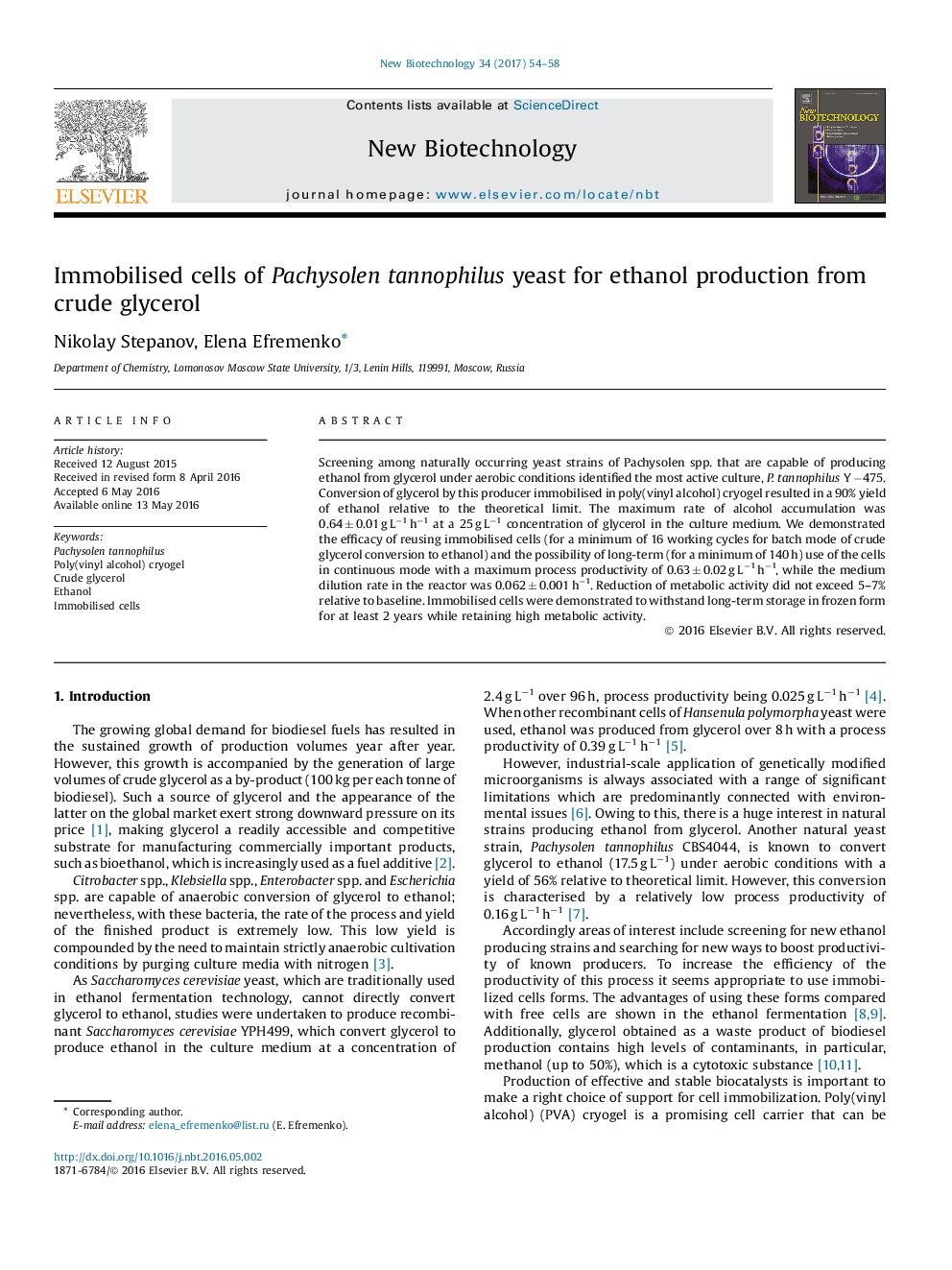| Article ID | Journal | Published Year | Pages | File Type |
|---|---|---|---|---|
| 4754957 | New Biotechnology | 2017 | 5 Pages |
â¢Crude glycerol conversion to ethanol by immobilised Pachysolen tannophilus yeast cells.â¢Higher rate of alcohol accumulation as compare to suspended cells.â¢High efficacy of multiple reusing immobilised cells under batch conditions.â¢Long-term use of immobilised cells in continuous mode glycerol conversion to ethanol.â¢Storage in frozen form for at least 2 years with retaining high metabolic activity.
Screening among naturally occurring yeast strains of Pachysolen spp. that are capable of producing ethanol from glycerol under aerobic conditions identified the most active culture, P. tannophilus Y â475. Conversion of glycerol by this producer immobilised in poly(vinyl alcohol) cryogel resulted in a 90% yield of ethanol relative to the theoretical limit. The maximum rate of alcohol accumulation was 0.64 ± 0.01 g Lâ1 hâ1 at a 25 g Lâ1 concentration of glycerol in the culture medium. We demonstrated the efficacy of reusing immobilised cells (for a minimum of 16 working cycles for batch mode of crude glycerol conversion to ethanol) and the possibility of long-term (for a minimum of 140 h) use of the cells in continuous mode with a maximum process productivity of 0.63 ± 0.02 g Lâ1 hâ1, while the medium dilution rate in the reactor was 0.062 ± 0.001 hâ1. Reduction of metabolic activity did not exceed 5-7% relative to baseline. Immobilised cells were demonstrated to withstand long-term storage in frozen form for at least 2 years while retaining high metabolic activity.
